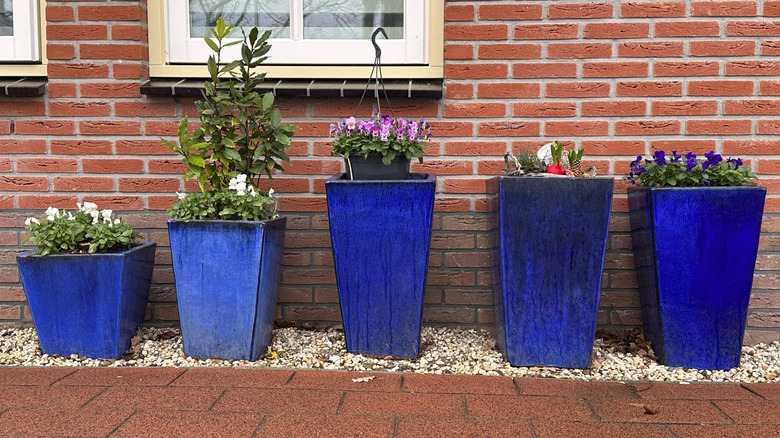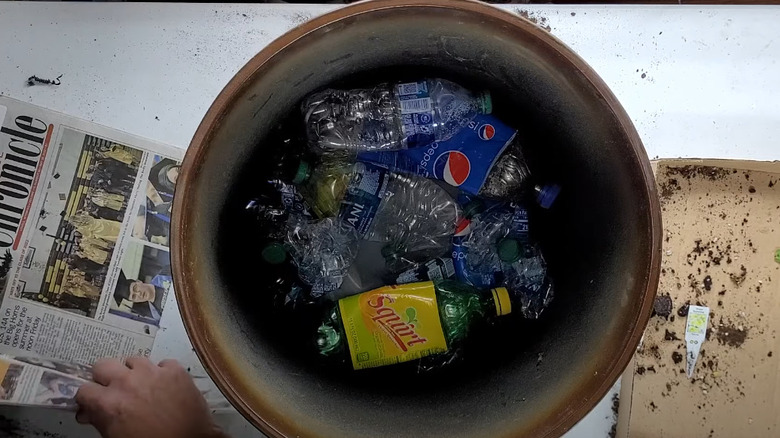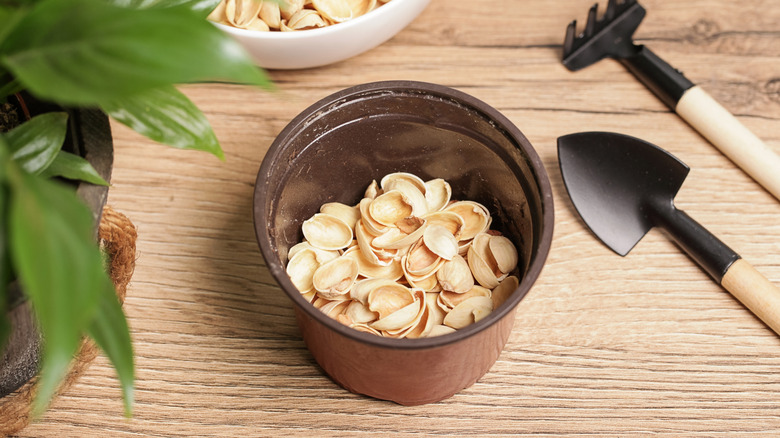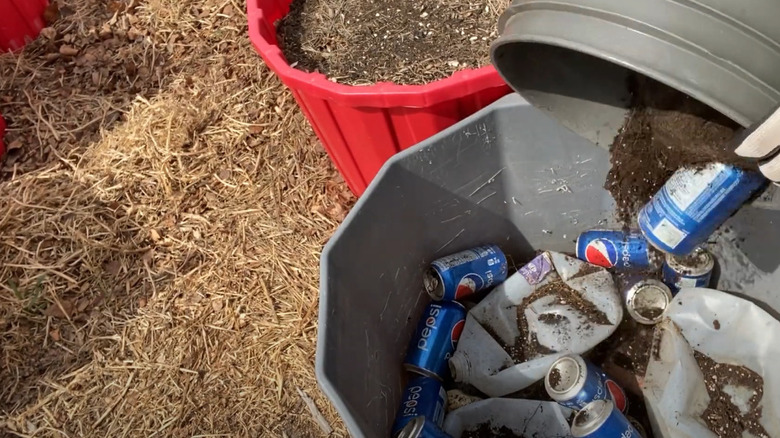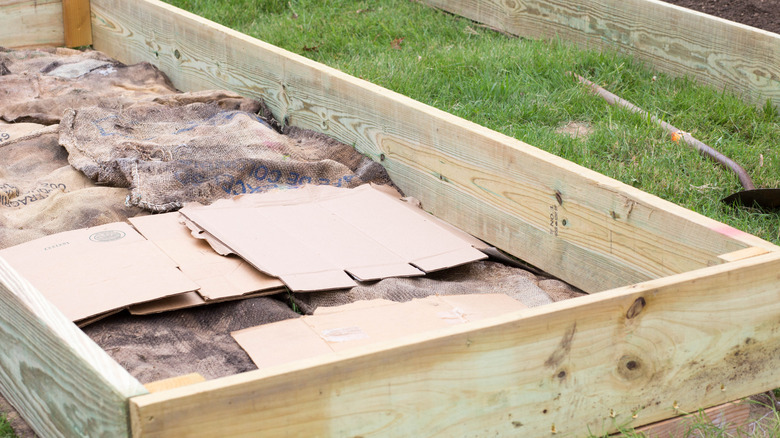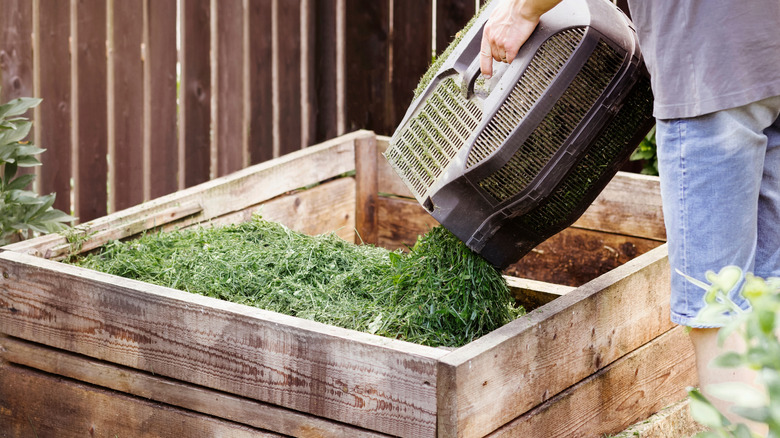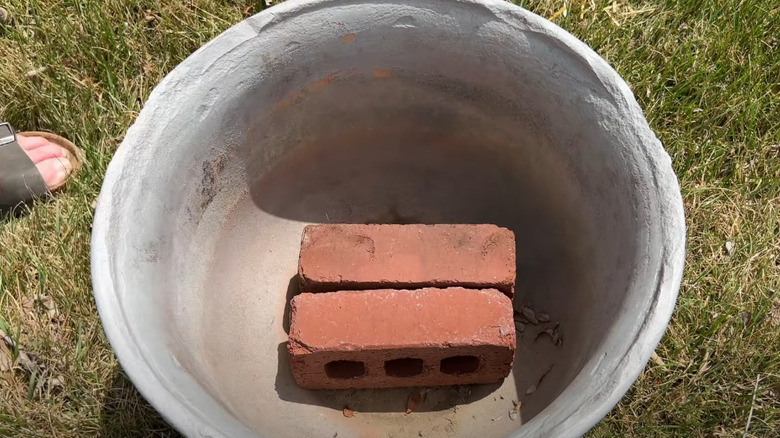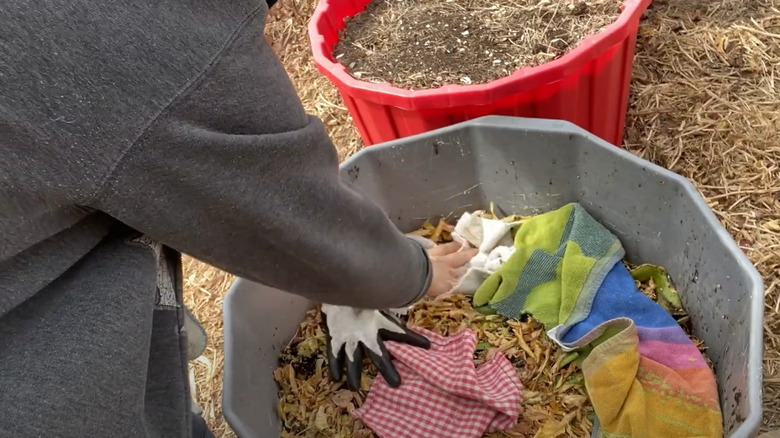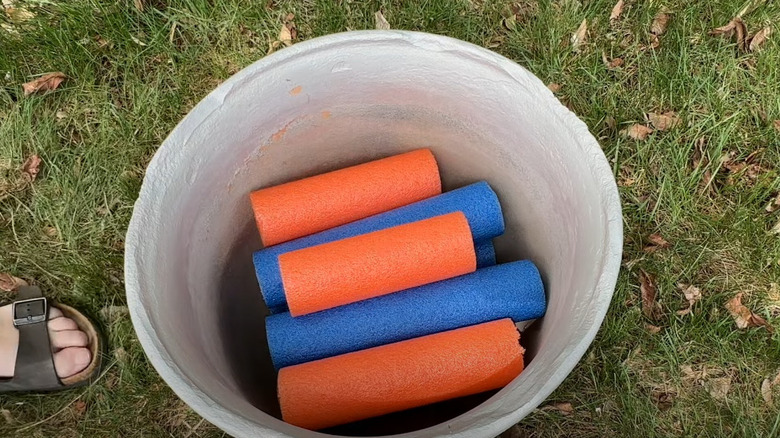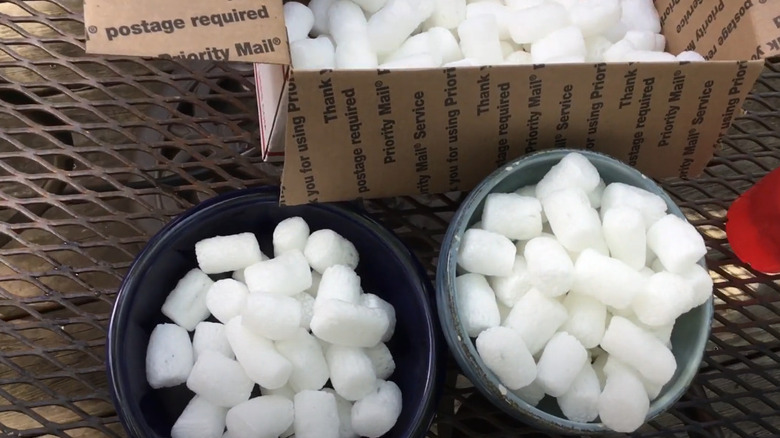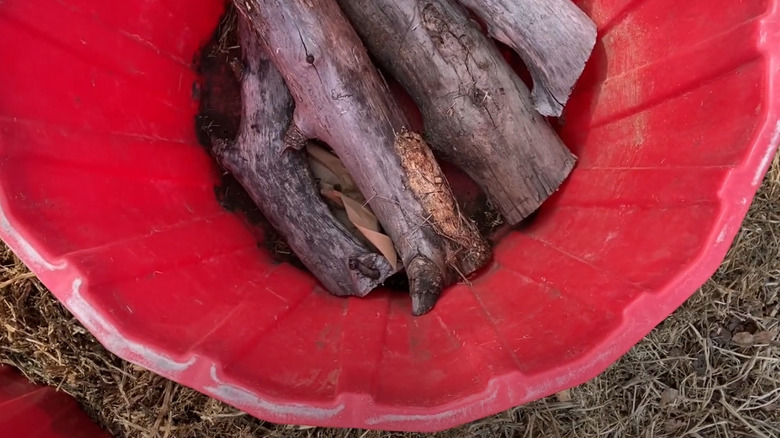Turn Trash Into Treasure By Repurposing These 12 Common Household Items Into Plant Pot Fillers
Statement-making, larger planters are an excellent accent to your outdoor areas, dressing up places like porches, patios, or decks. The big downside to those statement planters, though? They use a tremendous amount of soil, and as a result, they can get extremely heavy. It can also cost quite a bit of money to purchase that much material. To offset the large amount of soil you need for these oversized pots, gardeners will often use a pot filler, like broken-up rocks or pebbles to fill up space. However, that doesn't solve the weight problem at all, and if you're someone who likes to move your planters around frequently, traditional garden fillers may not work for you. Instead, look to your yard waste, trashcan, and recycling bin for lighter weight options that are more on the environmentally friendly side, and cost way less than soil.
Everyday items that you throw away, like plastic water bottles and cans, will provide long-lasting and reusable filler options for large planters. Other household waste items, like yard clippings, are biodegradable, eco-conscious options that can contribute to the overall health of your future soil. You'll likely have something of the sort on this list laying around your home, and reusing it as plant pot fillers is a way to give that "trash" another purpose. Plant pot fillers have a number of benefits aside from taking up space in your planters, like maintaining good drainage and aeration for the soil, and it's even better if you can utilize some old bits and bobs around your home, making for a budget-conscious as well as sustainable practice.
Plastic water bottles
Filling your flowerpots with empty plastic bottles will take up considerable amounts of space in the pot without the weight of traditional fillers or soil. Plastics don't break down easily, maintaining the integrity of the filler space for effectively as long as you need or want it to. As plastic bottles and cartons come in all sorts of shapes and sizes, this filler idea can work for planters that are oversized and require bigger pieces. And next time you have to lift that planter, your arms and back will thank you!
Old newspapers and phonebooks
Newspapers and old phone books (if you have any of those still laying around!) work well as biodegradable filler options. While newspaper alone likely won't fill as much of the pot as you'll want, newspaper does make for a great planter liner that allows moisture to go through without letting the soil shift or weeds grow, particularly when the root ball and the soil is still loose. In addition to newspapers, consider adding something heftier for the filler, like a phone book, to displace more of the soil necessary to fill the planter or flower pot.
Nut shells
This idea is the epitome of "one man's trash is another man's treasure." Old nut shells, specifically pistachio shells, can be repurposed as fillers, since they are much lighter than soil and improve the pot's drainage, helping aerate the roots. For larger pots that don't have drainage holes, the shells can also create a displaced chamber of air, which doubles as a water reservoir for when excess moisture works through the soil on top and makes its way down the pot. Just be sure to give your shells a rinse to remove salt before adding them to your pots.
Metal cans
Recycled soda cans are a feather light option for pot fillers as well. Like pistachio shells, crushed cans help drain excess water from the pot's soil and help aerate the plant's roots. Simply place the cans as high as you need dependent on your plants' root structures, add a screen wire or landscape fabric on top, and then fill the pot with soil. The screen and fabric help maintain clear layers between the filler and the soil, enhancing the cans' drainage ability, too. If able, crunch down the cans lightly to pack them and prevent air pockets.
Cardboard boxes
Cardboard boxes are a compostable filler idea that can help take up quite a bit of space in some of the largest planters and even raised beds so that you can avoid using so much soil. They're another extremely lightweight option for planters that will allow you to move the pots around easily. If you do end up using them in raised beds, they double as an eco-friendly weed mat, too. To make boxy shaped pieces of cardboard a bit more workable inside rounded pots, water them to make them flexible. This also helps begin the decomposition process.
Yard waste
A fantastic way of getting rid of green waste without having to wait for green waste pickup is to repurpose your yard clippings into fillers for your planters. All sorts of different yard waste can be used in this idea from pine cones to grass clippings, and even hay if you have any laying around. Eventually, the filler will decompose into a compost of sorts, adding additional nutrients to the soil, too. Just bear in mind given its ability to break down, this idea works best for seasonal planters and beds that get emptied and refilled every year.
Bricks
Though it's admittedly not a great weight option, bricks make a terrific structural and spatial filler idea. Bricks take up much more space in an oversized planter than other options on this list, thus saving you on quite a lot of potting soil without needing as much material on hand, either. Consider using this idea for planters that have casters and wheels on them so you can move them around easily despite the heavy filler material. This trick can also repurpose any broken bricks you may not know what to do with.
Rags
Old clothes, bedsheets, t-shirts — anything that's considered a rag can make for a decent filler option in large pots. Like plastic or metals, this option will likely not decompose, but they do provide a lightweight, breathable filler material for your planter pots, that would otherwise be considered trash and possibly end up in landfill. Supplement these rag pieces with yard waste so that the filler at the bottom isn't too dense for drainage, and add the soil on top as you would other fillers.
Pool noodles
Pool noodles are the secret weapon for many household or gardening hacks, and using them as planter fillers is no exception. Another light filler material that improves water drainage in soil, pool noodles are also particularly good at maintaining moisture levels in the pot, which helps bring the temperature of the soil down overall. It'll keep your plants cooler during the height of summer and will maintain a steady level of water. Simply cut the pool noodles with a knife to size, and stack them at the bottom of your planter before filling with soil.
Packing peanuts
Packing peanuts are another versatile lightweight plant filler that works particularly well with hydroponic plants if you're forgoing soil altogether. For traditional planting, use non-biodegradable peanuts (compostable packing peanuts may decompose too quickly, causing the soil to collapse before your plants are secure), in the bottom of the pot with a layer of landscaping fabric or in a feedbag to help maintain the soil's structural integrity. For hydroponic plants, layer the peanuts to the bottom of the planter, and soon you'll see the plant anchor itself to the pellets.
Firewood
If you've recently felled a tree or you have excess firewood laying around, these logs will do well to fill incredibly large planters, but much like bricks, they may be a little heavier than other suggestions on this list. Like yard waste, though, the logs will eventually decompose into a compost of sorts, simultaneously adding nutrients to the planter and creating more soil material for your use in the future. Like its heavier counterparts, this filler idea is another candidate for planters that are on casters so that you don't throw out your back in the future!
